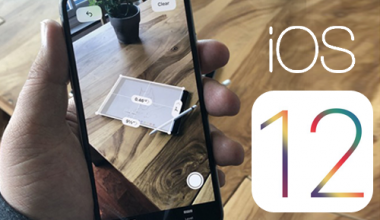Various phone makers including Nokia, Sony, Samsung and LG have been enjoying the very vast phone market that continues to expand as ordinary people are realizing the need for mobile phones to keep in touch and their low cost contributes to the increase in demand. Apple then surprised the competitors with its own phone known as the iPhone.
Development and Initial Release
Apple CEO, Steve Jobs, revealed the concept behind the iPhone back in 2003. The idea was to leverage the success of the iPod introduced back in 2001. Many rumors followed throughout the years before the official announcement on January 9, 2007 at the Macworld convention. The public reception of the iPhone was mixed, but much praise was given to its hardware specs and multi-touch support which was considered new to the phone industry at that time. It was also backed with some solid software including a special operating system that is based on Apple’s own Mac OS X. Some of the familiar programs like Safari were included to make the browsing experience smooth.
Although the disk space of the iPhone was quite limited with 4 or 8 gigabytes of flash memory, the best features of the iPod were incorporated into the iPhone while adapting to the new multi-touch interface highlighting its versatile usage as both a mobile phone and a portable media player. Various other features such as the Clock, Mail, Notes, Calculator, and Maps applications also make the iPhone a solid PDA device as well.
One of the things that users disliked about the iPhone was the enormous price tag at $600 for the 8 GB model with lower prices requiring a 2-year phone contract. Other disliked features were the lack of MMS support and inability to copy and paste text as well as the restrictions that prevent homebrew applications from running.
iPhone Successors
Despite the mixed reactions, the iPhone continued to sell well to millions of consumers worldwide causing Apple to release a newer model known as the iPhone 3G on July 18, 2008 which sported faster network speeds and an updated OS. The OS eventually updated to 3.0 which finally added cut, copy, and paste support along with MMS support putting Apple ahead of the pack in the mobile phone market.
The iPhone 3GS followed offering considerable speed improvements, higher camera resolution, video capabilities, and a higher capacity 32 GB model. This has caused the older iPhone model to drop in price at $99 with contract.
The Birth of the iPad
Apple’s other goal in addition to tackling the phone market was to also get into the tablet computer industry which spawned many rumors throughout the years. Some mockups of the Apple tablet describing its potential in taking on eBook readers and slate computers head on. Apple followed with an official announcement. Calling their device the iPad which resembles a blown up version of the iPhone without the calling capabilities. The main highlights were the same hardware technologies that power the iPhone along with a bigger screen and full support of the many applications that run on the iPhone.
The general reception of the iPad was mainly negative due to the lack of the USB or SD card slot, no multitasking, and no Adobe Flash support. The target market, however, is aimed at notebook and eReader users and the real results will be seen regarding its success this coming March 2010.



